This article was co-authored by wikiHow Staff. Our trained team of editors and researchers validate articles for accuracy and comprehensiveness. wikiHow's Content Management Team carefully monitors the work from our editorial staff to ensure that each article is backed by trusted research and meets our high quality standards.
This article has been viewed 71,343 times.
Learn more...
Airlines and airports offer a variety of options for individuals seeking wheelchair assistance. From reservations to boarding equipment, there are resources available for all your wheelchair needs. Notify your airline before you fly and show up a bit early to ensure your reservation. Arranging your wheelchair assistance at the airport will help you fly smoothly and stress-free!
Things You Should Know
- Call the airport and the airline you’re flying with at least 48 hours in advance and ask them to arrange for wheelchair services for you to ensure they set one aside for you.
- You can still get wheelchair services if you don’t set it up in advance, but show up at the airport at least 1 hour earlier than you normally would for domestic flights and 2 hours earlier for international flights to give yourself a buffer.
- If you just totally forget about it until you arrive at the airport, you can typically request wheelchair assistance at the ticketing counter and they’ll get one for you.
- In countries where tipping is customary, it’s generally a good idea to tip a wheelchair attendant $5-10 depending on how long they’re with you and how good the service is.
- It is almost universally required for airlines and airports to provide wheelchairs, if they’re requested, free of charge.
Steps
Preparing Before Your Flight
-
1Review your airline’s wheelchair guidelines. Visit your airline’s website and review the “accessibility” section on wheelchairs. Review their policies on flying with a personal wheelchair, stowing a battery-powered chair, or using wheelchair equipment to get on the plane. You can also call your airline's customer service line.[1]
- On some flights, you can carry on detachable items, like seat cushions and footrests.
- If your wheelchair uses a lithium ion battery, it will be removed, packaged in a protective covering, and stowed in the cabin.
-
2Check sizing requirements before you fly if you are bringing your own wheelchair. Ensure your personal wheelchair fits the sizing requirements to bring on the plane. Check on your airline's website or call their customer service line to check the sizing restrictions before you fly.[2]
- Every airline varies in their wheelchair size restrictions, though the typical size requirement is about 33 in × 34 in (84 cm × 86 cm) and under.
- If your wheelchair is too large to bring on board, you can stow it in the cargo area and use the airport's wheelchair to get around their airport.
- You can check a personal wheelchair at the ticket counter or at the gate, free of charge.
Advertisement -
3Check if your airlines requests a wheelchair information form. Not all airlines will request you complete wheelchair information forms, though they can speed up the time it takes to get assistance. Visit the airline's website, go to the "accessibility" section, and look for a form to fill out regarding your wheelchair requests. Some airlines will have you complete the form online, and others will request you print out the form, fill it out, and bring it with you to the airport.
- Each airline has a different policy regarding their forms, so check online or call their customer service line. Some airlines may not even ask for a form.
- Complete the form if you want to use wheelchair assistance at the airport, need to use equipment to board the plane, or would like to bring your own wheelchair on board.
- The form will ask for information like your name, flight number, flight location and destination, departure and return date, and assistance needs.
-
4Call at least 48 hours before your flight to request wheelchair services. To arrange wheelchair assistance at the airport, call the airport as early as you can to make your reservation. Inform the Accessibility department of your individual needs, and they will make the arrangements for you.[3]
- If you have completed the wheelchair information form, you can mention it when you call. Calling is not a requirement, though it will confirm your wheelchair assistance.
- Calling in advance is not a requirement, but it will ensure you will get assistance in a timely manner. It also better prepares the airport's customer service representatives to help you.
- You can request a wheelchair if you use one regularly or if you would like assistance with traveling around the airport.
-
5Call airport security at least 72 hours in advance for security questions. Your airport's security department can provide assistance with screening policies, procedures, and what to expect.[4]
- If you live in the United States, you can call TSA at (855)787-2227. Their hours are weekdays from 8:00 am to 11:00 pm ET and weekends from 9:00 am to 8:00 pm ET.
Requesting Assistance at the Airport
-
1Arrive at the airport at least 2 hours early to request assistance. As soon as you arrive, find an airport customer service representative and ask about wheelchair accommodations. Every airport has wheelchairs for customer use, though arriving early ensures you can promptly receive your assistance.[5]
- Some airports have electric carts for customer use.
- If you do not arrive early, you may have to wait a bit for your wheelchair assistance.
- If you have already made your reservation in advance, you don't need to arrive as early as you should without confirming your assistance. However, if you are trying to fly with your personal wheelchair, note that there is usually only room for 1 wheelchair and it is assigned on a first-come, first-served basis.
-
2Request wheelchair assistance at the ticketing counter. After you go inside the airport, inform the check-in attendants at that you would like wheelchair assistance.They can help you reserve a wheelchair if you stow your personal chair, and they can help arrange boarding assistance, like using ramps or slide boards.[6]
- Say something like, “Hello Melissa, I would love to use a wheelchair to get to Gate D." Or, "Hi there, I am flying with my battery-operated wheelchair today. Is there another I can use to get on the plane?”
- You can check your wheelchair at the ticket counter if you are traveling with a non-collapsible wheelchair, scooter, or other battery-powered wheelchair.[7]
-
3Ask airport staff members for assistance with transfers when you arrive. If you would like wheelchair assistance when exiting the plane and getting to your connection flight, let the airport staff or airline flight attendants know when you get to your first departing airport. They can arrange wheelchair assistance for you, both for your departing and connecting flights.[8]
-
4Get to your gate at least 1 hour early to request boarding assistance. Inform the attendants of your particular needs, like requesting an aisle chair or using a ramp to get your wheelchair on the plane. You can use lifts, ramps, aisle chairs, and slide boards to get on the plane.[9]
- Show up early to your gate so you can secure your wheelchair assistance. If you are late to board, you may have to rebook your flight.
-
5Ask a reservation attendant for assistance at your boarding zone. Once you get through security and arrive at your gate, the reservation attendant will inform you of how they can help, like checking if there is room to stow your personal chair on the plane or transporting your chair to the cargo area. Mention if you would like assistance with things like traveling with a wheelchair or getting onto the plane, and also whether you have any connecting flights.[10]
- The flight attendants can also assist you with moving from your wheelchair to your seat, as well as help you get to the bathroom with your wheelchair.
- If you are traveling with a personal wheelchair, you can request to bring your folding or collapsible wheelchair on board with you. There is a designated space on the plane for 1 wheelchair, and this is assigned on a first-come, first-served basis.
- If your wheelchair is not first or if it does not meet sizing requirements, flight attendants will transport it to the cargo compartment, free of charge.[11]
References
- ↑ https://www.alaskaair.com/content/travel-info/accessible-services/specialservices-wheelchair
- ↑ https://www.alaskaair.com/content/travel-info/accessible-services/specialservices-wheelchair
- ↑ https://www.alaskaair.com/content/travel-info/accessible-services/specialservices-other#assistant
- ↑ https://www.jetblue.com/travel/special-assistance/wheelchair-assistance/
- ↑ https://www.alaskaair.com/content/travel-info/accessible-services/specialservices-wheelchair
- ↑ https://www.jetblue.com/travel/special-assistance/wheelchair-assistance/
- ↑ https://www.aa.com/i18n/travel-info/special-assistance/mobility-and-medical-devices.jsp
- ↑ https://www.alaskaair.com/content/travel-info/accessible-services/specialservices-wheelchair
- ↑ https://www.jetblue.com/travel/special-assistance/wheelchair-assistance/
About This Article
If you want to guarantee the best wheelchair assistance at the airport, arrange it through your airline several days ahead of time. First, fill out a wheelchair information form on your airline’s website, which will ask you about the assistance you require. If your airline doesn’t have a form, call the accessibility department at the airport you’re flying from at least 48 hours prior to your flight to ask about assistance. Requesting assistance on the day of your flight is possible, but you’ll need to arrive at least 2 hours ahead of your departure time. When you get to the airport, ask a member of check-in staff about getting wheelchair assistance, but keep in mind that you’ll probably need to wait a bit for it to arrive. After you arrive at your destination, ask a flight attendant if you need assistance getting off the plane and into the airport. For tips on how to arrange to take your own wheelchair on board a flight, keep reading!




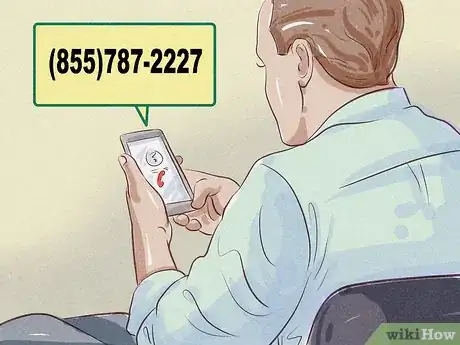



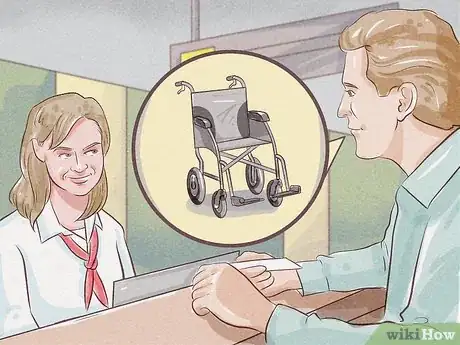




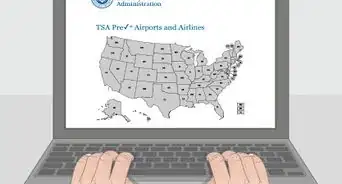

-Step-12.webp)
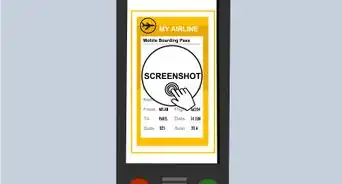



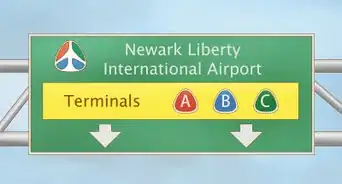













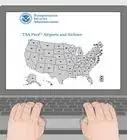



































Medical Disclaimer
The content of this article is not intended to be a substitute for professional medical advice, examination, diagnosis, or treatment. You should always contact your doctor or other qualified healthcare professional before starting, changing, or stopping any kind of health treatment.
Read More...